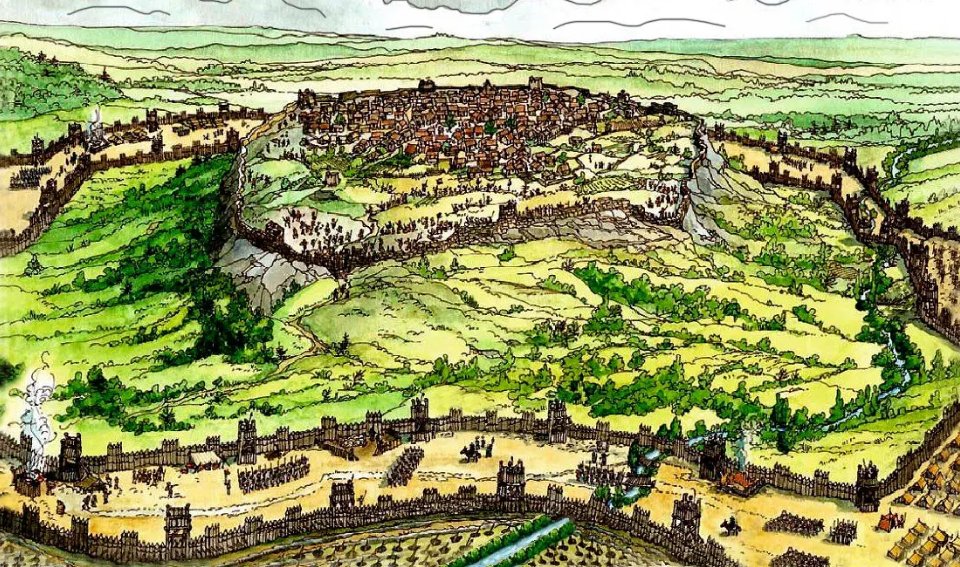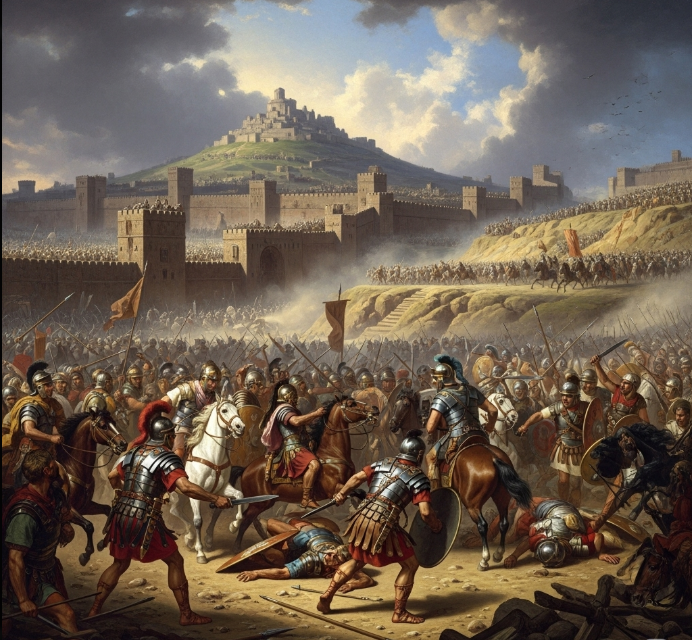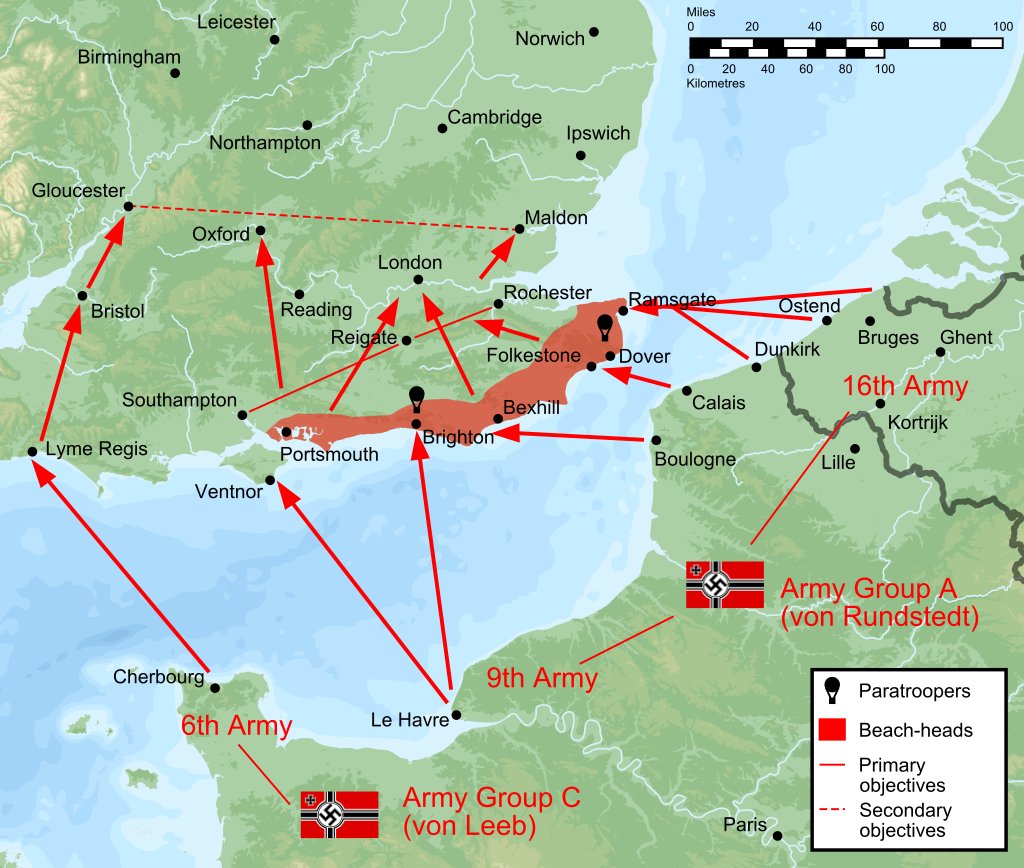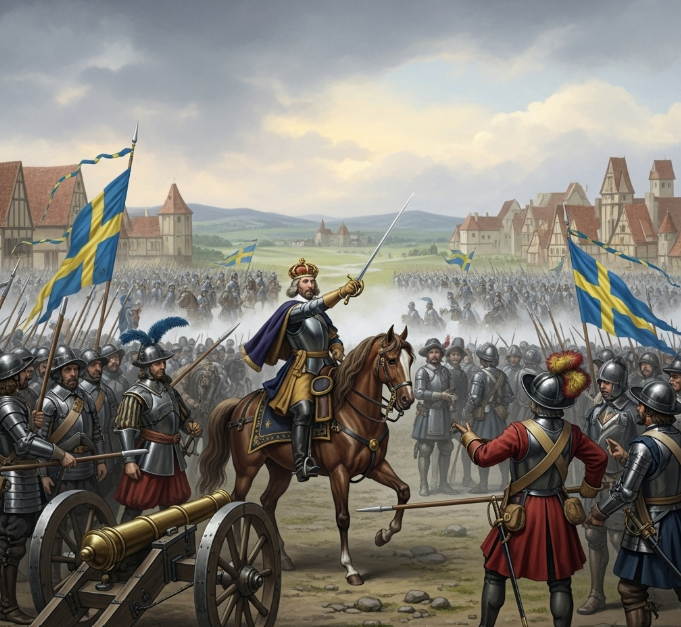
Uncovering the pivotal battles, iconic leaders, and game-changing technology of military history.
| Daily Facts | Weekly Threads | Historical Debates |
2 subscribers
How to get URL link on X (Twitter) App


 2/12 Dictator For Life:
2/12 Dictator For Life: 

 2/12 "Alea Iacta Est" – The Die Is Cast
2/12 "Alea Iacta Est" – The Die Is Cast

 2/4 The day began poorly for the Luftwaffe. Morning raids were hampered by bad weather, leading to confusion and uncoordinated attacks.
2/4 The day began poorly for the Luftwaffe. Morning raids were hampered by bad weather, leading to confusion and uncoordinated attacks.

 2/12 The Context: A Refugee Crisis on the Danube
2/12 The Context: A Refugee Crisis on the Danube

 2/14 The Stakes:
2/14 The Stakes:

 2/12 The Young Conqueror:
2/12 The Young Conqueror: 

 2/15 The Context:
2/15 The Context: 

 2/10 For Sea Lion to even begin, one thing must happen: the Luftwaffe must defeat the RAF. Let's assume, for our scenario, that through sheer weight of numbers they achieve a bloody, narrow, and temporary air superiority over the Channel and the South-East coast in late September 1940.
2/10 For Sea Lion to even begin, one thing must happen: the Luftwaffe must defeat the RAF. Let's assume, for our scenario, that through sheer weight of numbers they achieve a bloody, narrow, and temporary air superiority over the Channel and the South-East coast in late September 1940.

 2/10 Our story begins in the 530s AD. The Western Roman Empire is gone, but the Eastern (Byzantine) Empire, under Emperor Justinian I, dreams of restoring it.
2/10 Our story begins in the 530s AD. The Western Roman Empire is gone, but the Eastern (Byzantine) Empire, under Emperor Justinian I, dreams of restoring it.

 2/5 The arrival of Baron von Steuben, a Prussian captain, was pivotal. He didn't speak English but used a translator to systematically drill the soldiers. He introduced discipline, bayonet training, and camp sanitation, drastically reducing deaths from disease.
2/5 The arrival of Baron von Steuben, a Prussian captain, was pivotal. He didn't speak English but used a translator to systematically drill the soldiers. He introduced discipline, bayonet training, and camp sanitation, drastically reducing deaths from disease. 

 1/7 While today, July 12th, is famously known as 'The Twelfth' for commemorating the Battle of the Boyne, a far more decisive and brutal battle was fought on this very day in 1691: The Battle of Aughrim. This was the real military endgame of the Williamite War in Ireland.
1/7 While today, July 12th, is famously known as 'The Twelfth' for commemorating the Battle of the Boyne, a far more decisive and brutal battle was fought on this very day in 1691: The Battle of Aughrim. This was the real military endgame of the Williamite War in Ireland. 

 1/10 With the Swedes shattered at Nördlingen, a total Habsburg victory seemed imminent. To prevent this, a new power intervened directly, not for faith, but for power. This is the final, brutal chapter of the war: the French Phase (1635-1648).
1/10 With the Swedes shattered at Nördlingen, a total Habsburg victory seemed imminent. To prevent this, a new power intervened directly, not for faith, but for power. This is the final, brutal chapter of the war: the French Phase (1635-1648). 

 1/10 With the Danes defeated and the Emperor at the height of his power, the Protestant cause in Germany seemed lost. But across the Baltic, a king with a revolutionary new army was watching. The war was about to be transformed. This was the Swedish Phase (1630-1635).
1/10 With the Danes defeated and the Emperor at the height of his power, the Protestant cause in Germany seemed lost. But across the Baltic, a king with a revolutionary new army was watching. The war was about to be transformed. This was the Swedish Phase (1630-1635).

 1/10 The Bohemian Revolt was crushed, but the embers of war remained. Fearing the rise of Habsburg power on his borders, a new Protestant champion entered the fray, backed by foreign gold. This is the story of the Danish Phase (1625-1629).
1/10 The Bohemian Revolt was crushed, but the embers of war remained. Fearing the rise of Habsburg power on his borders, a new Protestant champion entered the fray, backed by foreign gold. This is the story of the Danish Phase (1625-1629).

 2/10 THE ARMIES: The Bohemian rebels, under Prince Christian of Anhalt, had about 21,000 men. A mixed force of Bohemians, Germans, and Hungarian mercenaries, many unpaid and demoralised after a long retreat. They took up a strong defensive position on the slopes of White Mountain, just west of Prague.
2/10 THE ARMIES: The Bohemian rebels, under Prince Christian of Anhalt, had about 21,000 men. A mixed force of Bohemians, Germans, and Hungarian mercenaries, many unpaid and demoralised after a long retreat. They took up a strong defensive position on the slopes of White Mountain, just west of Prague.

 2/10 It all began with a spark. Jan Hus, a Bohemian church reformer, was executed for heresy in 1415. His death enraged his followers, the Hussites, who rose up against the authority of the Pope and the Holy Roman Emperor Sigismund.
2/10 It all began with a spark. Jan Hus, a Bohemian church reformer, was executed for heresy in 1415. His death enraged his followers, the Hussites, who rose up against the authority of the Pope and the Holy Roman Emperor Sigismund.

 2/8 The Holy Roman Empire was a complex patchwork of territories in Central Europe. By the 15th and 17th centuries, religious tension between Catholics and reformers (like the Hussites and later, Protestants) was at a fever pitch, especially in the Kingdom of Bohemia (modern-day Czechia)
2/8 The Holy Roman Empire was a complex patchwork of territories in Central Europe. By the 15th and 17th centuries, religious tension between Catholics and reformers (like the Hussites and later, Protestants) was at a fever pitch, especially in the Kingdom of Bohemia (modern-day Czechia)

 2/7 It all ignited in 1494 when King Charles VIII of France invaded Italy to press his claim on the Kingdom of Naples. His powerful, modern army, featuring a formidable mobile artillery train, marched the length of the peninsula with shocking ease, awakening Italy to its own vulnerability. #Renaissance #Warfare
2/7 It all ignited in 1494 when King Charles VIII of France invaded Italy to press his claim on the Kingdom of Naples. His powerful, modern army, featuring a formidable mobile artillery train, marched the length of the peninsula with shocking ease, awakening Italy to its own vulnerability. #Renaissance #Warfare

 2/12 The German Order of Battle was built on three massive Army Groups, each with distinct objectives:
2/12 The German Order of Battle was built on three massive Army Groups, each with distinct objectives:

 Boston, 1775. The city is under siege by thousands of newly-formed colonial militia. To break the stalemate, the British plan to seize the high ground on the unoccupied Charlestown Peninsula.
Boston, 1775. The city is under siege by thousands of newly-formed colonial militia. To break the stalemate, the British plan to seize the high ground on the unoccupied Charlestown Peninsula.

 2/7 Hannibal's invasion of Italy in 218 BC was one of the most audacious military campaigns in history. Instead of a direct sea route, he chose a grueling overland journey across the Alps! Why this seemingly impossible path?
2/7 Hannibal's invasion of Italy in 218 BC was one of the most audacious military campaigns in history. Instead of a direct sea route, he chose a grueling overland journey across the Alps! Why this seemingly impossible path? 